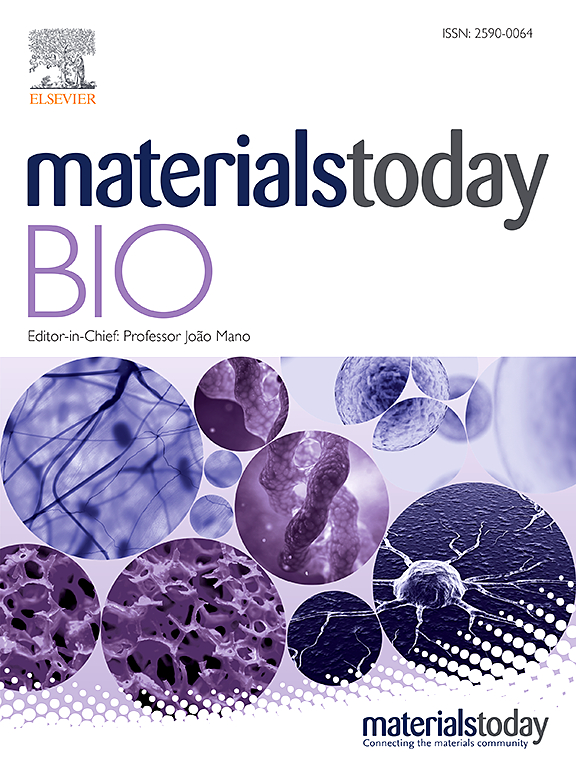Tumor-targeting nanomaterials based on metal-organic frameworks mediate tumor immunotherapy by promoting cuproptosis and pyroptosis in hepatocellular carcinoma cells
IF 8.7
1区 医学
Q1 ENGINEERING, BIOMEDICAL
引用次数: 0
Abstract
Activating a robust immune response is an effective strategy for achieving tumor eradication. In this study, copper-based metal-organic framework nanoparticles (referred to as FA-PZ@MOF NPs), which have the ability to simultaneously induce cuproptosis and pyroptosis in tumor cells, were designed to utilize the synergistic effects of cuproptosis and pyroptosis to trigger immunogenic cell death (ICD). This can inhibit tumor growth, migration, and metastasis while enabling efficient antitumor immunotherapy. The nano inducer targets hepatocellular carcinoma tumor cells via folic acid, dissociates and releases copper ions in the tumor microenvironment (TME), which has a high glutathione concentration, leading to copper ion overload, thereby mediating cuproptosis. Additionally, the released ZnO2 generates substantial amounts of H2O2 and Zn2+ in the acidic environment, enhancing the Cu2+-based Fenton-like reaction for chemokinetic therapy. This exacerbates the reactive oxygen species (ROS) storms and mitochondrial damage, and combined with the action of Polyphyllin VI (PPVI), induces pyroptosis and cuproptosis. This multilayered interaction strategy also triggers robust ICD while inhibiting hepatocellular carcinoma tumor metastasis and invasion.

求助全文
约1分钟内获得全文
求助全文
来源期刊

Materials Today Bio
Multiple-
CiteScore
8.30
自引率
4.90%
发文量
303
审稿时长
30 days
期刊介绍:
Materials Today Bio is a multidisciplinary journal that specializes in the intersection between biology and materials science, chemistry, physics, engineering, and medicine. It covers various aspects such as the design and assembly of new structures, their interaction with biological systems, functionalization, bioimaging, therapies, and diagnostics in healthcare. The journal aims to showcase the most significant advancements and discoveries in this field. As part of the Materials Today family, Materials Today Bio provides rigorous peer review, quick decision-making, and high visibility for authors. It is indexed in Scopus, PubMed Central, Emerging Sources, Citation Index (ESCI), and Directory of Open Access Journals (DOAJ).
 求助内容:
求助内容: 应助结果提醒方式:
应助结果提醒方式:


